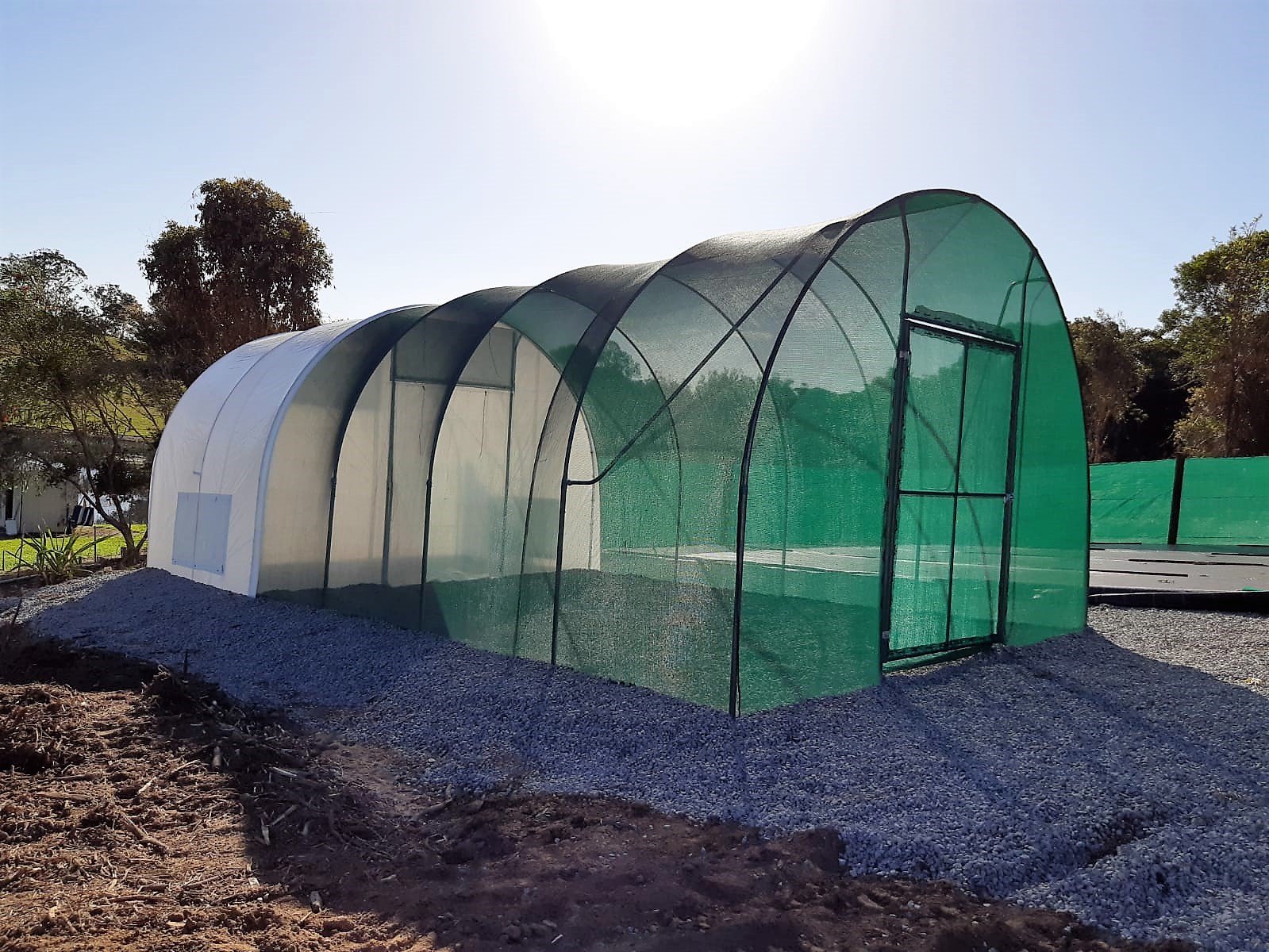
Shadecloth versus Plastic? Selecting Greenhouse Covers
Published: February 13, 2024 by Kim Elverding | Updated: February 13, 2024
Shadecloth or Plastic? The choice of cover material of your tunnelhouse is essential for achieving optimal growing conditions. What cover is perfect for your plants, depends on the amount of light, heat and humidity needed for your plants and your local climate.
In this article, we explore the benefits of shadecloth and plastic covers and when they are right for your growing needs.
Why Shadecloth cover?
Temperature Regulation: Australian summers can be extremely hot, and shadecloth will protect your plants from the hot sun and create shade. It filters sunlight and UV rays, prevents overheating and creates a more beneficial environment for your plants.
Water conservation: Shadecloth reduces water evaporation. This means that less water is needed to keep the plants happy and thriving. And less water wastage means more sustainable gardening practices.
Crop-Specific Shading: Different plants have different preferences when it comes to sunlight. With different levels of shading available, shadecloth lets you tailor the light exposure to meet the unique needs of your plants.
Durable Down Under: Resilient to the harsh Australian conditions, shadecloth is built tough. It can withstand strong winds, resist tearing, and is generally a long-lasting investment for your greenhouse.
Wildlife & Pests: Both shadecloth and plastic covers will contain the threat of fire ants and create a barrier for kangaroos, rats, and other wildlife. Also, plant diseases are easier to keep out of your greenhouse with a good cover.
Why Plastic cover?
Insulation Excellence: Maybe the biggest difference between shadecloth and plastic covers is the ability to retain and create heat for your plants and crops. This is especially important for the propagation and growing of seedlings. The insulation quality of a plastic cover can also extend the growing season into the colder months.
Water control: While Shadecloth already reduces the evaporation of water, a plastic cover controls the water in your greenhouse even more. It blocks out the rain and gives you the opportunity to collect rainwater. It’s also important to note that this means you do have to actively water your plants.
Tropical all year around: Some plants love the humidity and warmth of the tropics. With the insulation, water control and ability to optimise light, you can create tropical growing conditions all year around.
A Harmonious Blend for Optimal Results
Selecting the appropriate greenhouse cover depends on your plants’ specific needs, the local climate, and your personal preferences. To achieve optimal growing conditions, a combination of shadecloth and plastic may work best for your plants. You can consider a plastic roof and shade cloth sides for ventilation or add a plastic overcover in Winter to add warmth to your tunnelhouse.
A Successful Start Covered
The right cover on your tunnelhouse will help you create the optimal growing conditions for your crops. It is the start of a successful yield. A tunnelhouse, shadehouse or greenhouse is like an oven to a pastry chef. It is essential to create the right recipe, but it doesn’t mean your cake will be delicious. A good cover will help you manage your greenhouse and growing conditions so that you can grow on a successful yield.
Still unsure what shadecloth or plastic cover is best for your plants?
Let us help you decide! EnviroTec has over 35 years of experience producing and constructing horticultural structures for nurseries, food growers and hobby farmers. Contact us today for advice & a quote.
